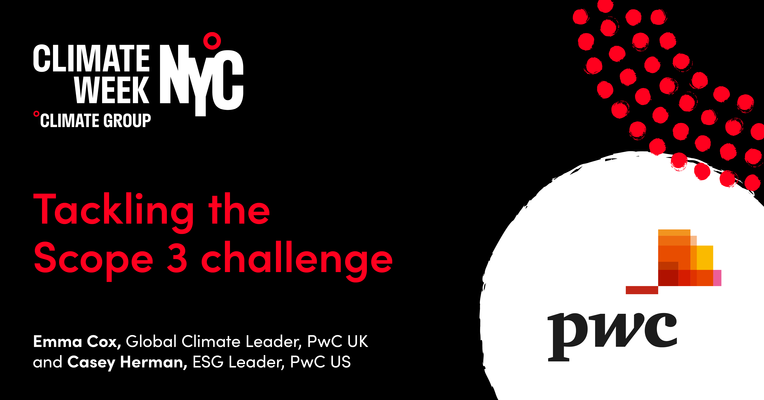Measuring and tracking Scope 3 emissions may be tricky, but companies don’t need to do everything at once to make meaningful progress.
When it comes to reducing a company’s Scope 3 greenhouse gas emissions, supply chain managers face a daunting task. Scope 3 emissions are both large (making up 65–95% of most companies’ carbon impact) and indirect—a consequence of a company’s activities outside its direct control. This can make estimating and tracking them, let alone reporting them, seem devilishly complicated. For example:
- One global consumer goods company we’ve worked with had a supply chain that included thousands of suppliers—and tens of thousands of stock-keeping units (SKUs). The company’s estimates of its Scope 3 emissions reflect not just how each SKU is produced but also how it’s used (and for how long), cleaned and disposed of at the end of its useful life.
- One financial institution we supported had Scope 3 financed emissions via multiple loans to various operations and activities of the same oil and gas company in different parts of the world, as well as up and down the value chain.
The good news is that while perfect data might be difficult to come by (especially beyond Tier 1 suppliers) useful, actionable data is not. In many cases, an incremental approach to data collection can ease the burden. We’ve typically found that as much as 80% of an organization’s supply chain emissions come from as few as one-fifth of its purchases. At one public-sector agency, just 20 suppliers were responsible for 94% of the agency’s Scope 3 emissions. This means that in principle the agency could, within about ten years, cut its Scope 3 supply chain emissions in half by focusing on just those 20 suppliers.
In situations where companies can’t get direct information from suppliers, the Greenhouse Gas Protocol allows them to use industry averages, proxies and other sources to calculate their Scope 3 emissions. Any number of third-party data suppliers, as well as the International Energy Agency and various government agencies, can help.
Nonetheless, calculating Scope 3 emissions using incremental and third-party approaches presents challenges. Here are four of the most common that we’ve helped organizations address:
- Collecting and reporting data can be time-consuming and resource-intensive. Because companies that rely very heavily on third-party sources often aren’t involved in the Scope 3 calculations themselves, they may struggle to understand their own Scope 3 footprint—and thus improve it.
- Scope 3 modelling approaches, such as one based on product spend with a given supplier, may not be detailed enough to support better management decisions or identify distinct opportunities for a company to lower carbon emissions. (Spend-based modelling, for example, relies on industry-average emissions factors and thus doesn’t necessarily reflect the actual emissions footprint of a given company.) What’s more, an overreliance on modelling can tempt managers to pay more attention to the model and its assumptions than making real improvements to Scope 3 emissions—particularly when executive rewards are tied to the model’s output.
- Extrapolating results from a small sample of suppliers is a common (and useful) approach to estimating Scope 3 emissions. But when companies lack the necessary statistical expertise, the result is unreliable data.
- Even when companies have the right expertise, they often lack the organizational structure and processes to oversee the estimations, quantification and extrapolation of Scope 3 data in multiple parts of the business. Because these activities involve subjective choices and judgments in a mostly unregulated process, the risk is that the only things included in Scope 3 reporting will be the ones that can be most easily measured, rather than the most material, “big ticket” items.
Despite all the complexity surrounding Scope 3 emissions, one thing remains simple: the end goal of measuring and tracking them is to shape business decisions that mitigate the effects of climate change. For business leaders, the resulting agenda for corporate action should be equally clear: leverage your data to focus efforts where they will have the greatest impact, establish a baseline of performance, prioritize efforts with suppliers and craft meaningful performance incentives for them. Do these things, and you’re making a positive contribution.
One beneficiary is the broader ecosystem. After all, your Scope 1 and 2 emissions are another organization’s Scope 3. And until all companies measure, track and report their emissions, the availability, accuracy and transparency of data will continue to be one of the biggest challenges to reducing carbon emissions. Another beneficiary? Your bottom line. The work companies do to tackle Scope 3 emissions can help strengthen relationships with suppliers and improve collaboration—actions that can lead to cost savings, new revenue-generating opportunities or both.
Finally, soon you may not have a choice. Scope 3 reporting has thus far been mostly voluntary, but the pressure to make it mandatory is growing. The International Sustainability Standards Board (ISSB), the US Electronic Subcontracting Reporting System (eSRS) and the US Securities and Exchange Commission have all drafted recommendations requiring some disclosure of Scope 3 emissions—with the ISSB also requiring qualitative information to explain how reported emissions were calculated. What’s more, a recent PwC survey of 325 investors (representing $14 trillion in assets under management) found that more than one-third of them identified reducing Scope 3 emissions as a priority.
Forward-looking organizations will read the writing on the wall and start developing the capabilities and expertise they’ll need to measure—and manage—their Scope 3 emissions. By adopting an incremental approach to data collection, organizations can begin making meaningful progress now—before it’s too late.
We’re delighted to be working with the Climate Group as Executive Series Sponsor at Climate Week NYC this year. Find out more.
Emma Cox is global climate leader at PwC. She has worked on a wide range of climate-related projects in both the public and private sectors. A partner with PwC UK, she is based in London.
Casey Herman leads PwC’s ESG practice in the United States. Based in Chicago, he is a partner with PwC US.
